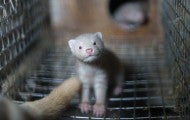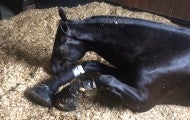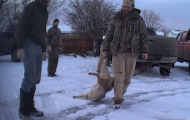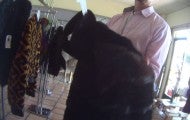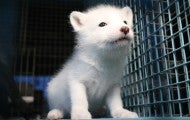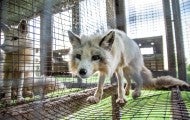Fur production in the U.S. is plummeting, and that’s good news for animals. Every five years, as part of the U.S. Census, the U.S. Department of Agriculture releases data on mink farms in the country. The newly released numbers show that in 2017, 236 mink fur farms existed in the U.S. Five years later, only 110 mink fur farms remained. With the speed of this decline, we believe even more mink farms have closed in the last year.
Update 10/1/2021: The PAST Act has now been reintroduced in the House of Representatives (H.R. 5441) with 213 cosponsors. We hope that this is finally the beginning of the end of the extremely cruel practice of horse soring. The myriad forms of animal cruelty make for a large and grim inventory, but...
I recently discussed the benefits of reducing the consumption of animal products both for farmed animals and for the climate. But there are many other potential beneficiaries of a revamping of how animals are bred and farmed in various contexts, from ranches to fur farms. Here are some of the wild animals who suffer because of animal agriculture.
At the end of a macabre “contest” in Mendon, Illinois, a young boy carries the lifeless bodies of coyotes streaked with blood and torn apart by bullets. He walks across blood-soaked pavement, struggling under the weight of the animals as he helps to load the bodies onto trucks, while other children...
Undercover investigation exposes senseless rush to kill coyotes at New York wildlife killing contest
Our latest investigation into a New York State wildlife killing contest gives Americans another grisly glimpse into a world of shocking animal cruelty: one where coyotes, including heavily pregnant females, were lured to their death using bait and digital calling devices, their bodies mutilated and...
It is a bloody scene at the Texas weigh-in of the “De Leon Pharmacy and Sporting Goods’ Varmint Hunt #1” on a cold January morning this year. Participants in this wildlife killing contest are unloading the bodies of bobcats, grey foxes, coyotes and raccoons from their trucks, which are expensively...
The use of fur in fashion causes immense suffering for millions of animals, so it’s no wonder that an increasingly animal-loving public is making the strongest fashion statement of all: opting for clothing made from humane and environmentally friendly materials. And yet, some retailers and producers are perpetuating the cruelty of fur, refusing to accept that a fur-free future is a near reality.
A federal court judge last night threw out a challenge to San Francisco’s ban on the sale of fur, in a historic victory against this unnecessary and immensely cruel commodity. The city’s ban, which passed in 2018, took effect earlier this year and it led the way for many wins against fur, including...
One of the ways we make a difference for animals is by working on the state and local levels to secure the passage of laws that prevent cruel and inhumane practices that threaten animals—from puppies born in massive puppy mills to coyotes and foxes at risk of coming into the scope of a trophy hunter...
It is the height of absurdity that, in 2023, animals continue to be born to be killed and skinned for a coat trim or a pom-pom on a hat. But we are heartened that with each year we see monumental progress toward our vision: a world in which not a single animal is killed just for fashion. The fight against the fur trade is at the heart of our humane movement and has been for decades. Every year that passes sees a heightened public awareness of the importance of this fight. In 2023, we’ve continued to put pressure on the industry, leading to a significant decline in fur production globally.
Making the world a more humane place for animals is fundamentally a matter of changing hearts and minds. No progress for animals would be possible without shifting perception. Where once a person wearing a fur coat conveyed a sense of wealth and status, it is now an image of callous indifference in the face of incredible animal cruelty. But progress isn’t a straight shot: Every now and then a fad seems to take us a step backward.

